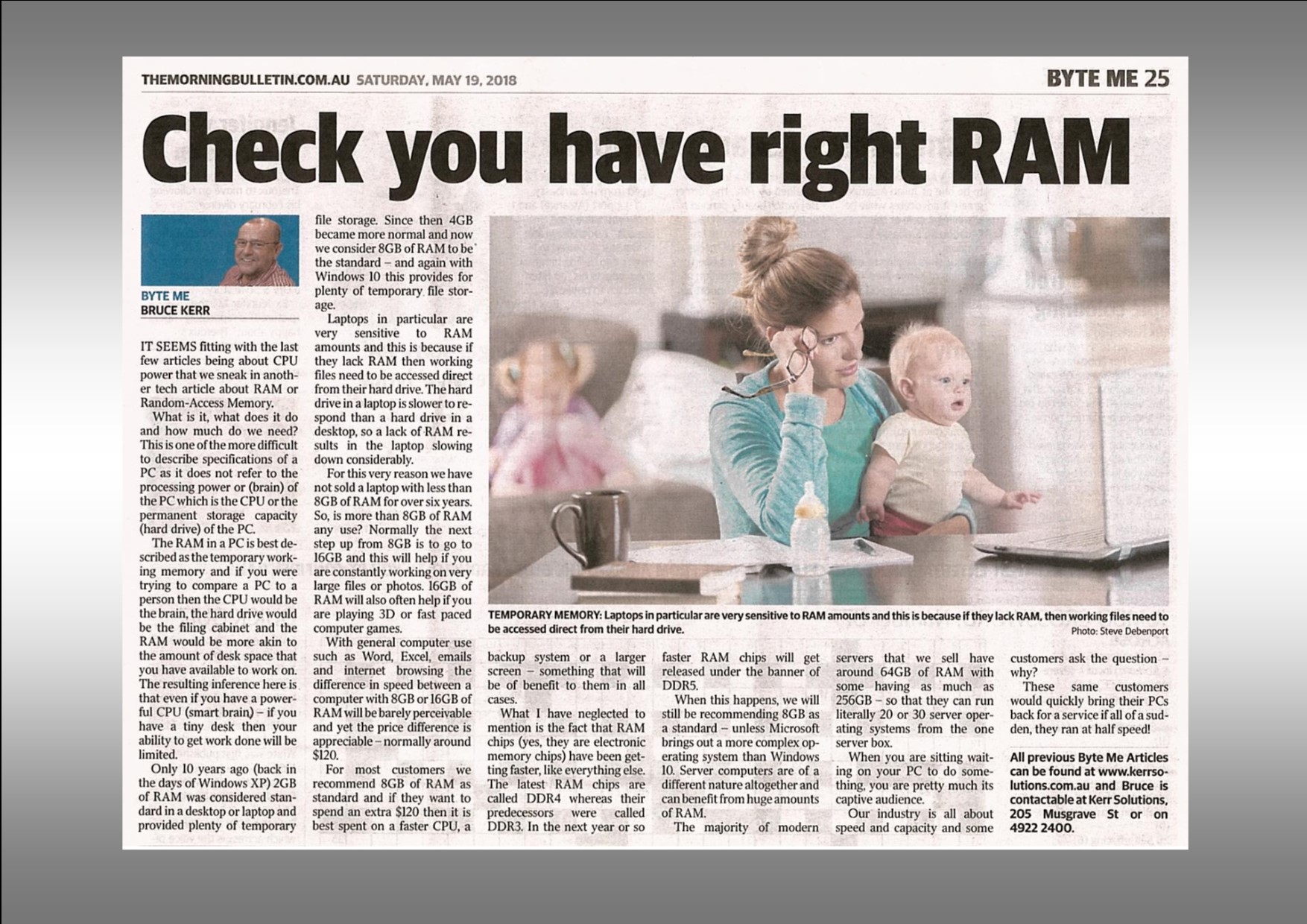19th May 2018
Check You Have Right RAM
It seems fitting with the last few articles being about CPU power that we sneak in another tech article about Ram (RAM) or Random-Access Memory. What is it, what does it do and how much do we need? This is one of the more difficult to describe specifications of a PC as it does not refer to the processing power or (brain) of the PC which is the CPU or the permanent storage capacity (hard drive) of the PC.
The Ram in a PC is best described as the temporary working memory and if you were trying to compare a PC to a person then the CPU would be the brain, the hard drive would be the filing cabinet and the RAM would be more akin to the amount of desk space that you have available to work on. The resulting inference here is that even if you have a powerful CPU (smart brain) – if you have a tiny desk then your ability to get work done will be limited.
Only 10 years ago (back in the days of Windows XP) 2GB of RAM was considered standard in a desktop or laptop and provided plenty of temporary file storage. Since then 4GB became more normal and now we consider 8GB of RAM to be the standard – and again with Windows 10 this provides for plenty of temporary file storage.

Laptops in particular are very sensitive to RAM amounts and this is because if they lack RAM then working files need to be accessed direct from their hard drive. The hard drive in a laptop is slower to respond than a hard drive in a desktop, so a lack of RAM results in the laptop slowing down considerably.
For this very reason we have not sold a laptop with less than 8GB of RAM for over 6 years. So, is more than 8GB of RAM any use? Normally the next step up from 8GB is to go to 16GB and this will help if you are constantly working on very large files or photos. 16GB of RAM will also often help if you are playing 3D or fast paced computer games.
With general computer use such as Word, Excel, Emails and Internet browsing the difference in speed between a computer with 8GB or 16GB of RAM will be barely perceivable and yet the price difference is appreciable – normally around $120.
For most customers we recommend 8GB of RAM as standard and if they want to spend an extra $120 then it is best spent on a faster CPU, a backup system or a larger screen – something that will be of benefit to them in all cases.
What I have neglected to mention is the fact that RAM chips (yes, they are electronic memory chips) have been getting faster, like everything else. The latest RAM chips are called DDR4 whereas their predecessors were called DDR3. In the next year or so faster RAM chips will get released under the banner of DDR5.
When this happens, we will still be recommending 8GB as a standard – unless Microsoft brings out a more complex operating system than Windows 10. Server computers are of a different nature altogether and can benefit from huge amounts of RAM.
The majority of modern servers that we sell have around 64GB of RAM with some having as much as 256GB – so that they can run literally 20 or 30 server operating systems from the one server box. When you are sitting waiting on your PC to do something, you are pretty much its captive audience. Our industry is all about speed and capacity and some customers ask the question – why?.
These same customers would quickly bring their PC’s back for a service if all of a sudden, they ran at half speed!
All previous Byte Me Articles can be found on our website at www.kerrsolutions.com.au and Bruce is contactable at Kerr Solutions, 205 Musgrave Street or on 49 222 400.
For more advice and assistance from Kerr Solutions, like and follow us on Facebook
